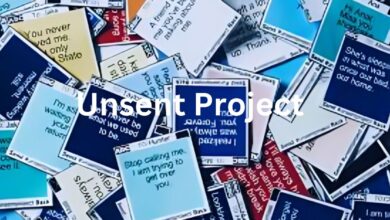Fauxmoi The Rise of Digital Identity and Its Impact on Modern Society

In the digital era, personal identity has become increasingly fluid. Social media, virtual communities, and online interactions have given rise to a new way of presenting ourselves—one that is carefully curated and often detached from reality. This phenomenon is often described as “Fauxmoi.” The term is derived from the French words “faux” (false) and “moi” (me), signifying an artificial version of oneself. In this article, we will explore the origins, significance, and implications of Fauxmoi, as well as its impact on self-perception, relationships, and mental health.
The Origin of Fauxmoi
The concept of Fauxmoi emerged alongside the growth of the internet and social media platforms. Early social networking sites like MySpace and Facebook allowed users to showcase selective aspects of their lives, creating a controlled narrative. Over time, Instagram, TikTok, and Snapchat heightened this trend by emphasizing visual aesthetics, lifestyle branding, and influencer culture. As people became more invested in crafting a flawless digital persona, the line between their true selves and their online personas started to blur, leading to the widespread adoption of Fauxmoi.
Why Do People Create a Fauxmoi?
- Social Validation: The desire for likes, comments, and followers encourages individuals to present an idealized version of themselves. Validation from peers can boost self-esteem and reinforce a sense of belonging.
- Career and Networking: Many professionals build a digital identity to advance their careers. From LinkedIn profiles to personal branding on Instagram, a polished online presence can open doors to opportunities.
- Escapism: For some, Fauxmoi serves as an escape from real-life struggles. By crafting a different persona, individuals can temporarily detach from challenges and insecurities.
- Cultural and Societal Pressures: Society often promotes unrealistic beauty standards, wealth, and success. People feel pressured to conform, leading them to construct a Fauxmoi that aligns with these expectations.
The Psychological Effects of Fauxmoi
While Fauxmoi can serve as a tool for self-expression and connection, it also has profound psychological implications:
- Imposter Syndrome: Constantly maintaining an idealized persona can create feelings of fraudulence. Individuals may struggle with self-worth, fearing they are not as successful or happy as they appear online.
- Anxiety and Depression: The pressure to maintain an unrealistic image can lead to mental health struggles, especially when individuals compare their real lives to the seemingly perfect lives of others.
- Addiction to Social Media: The need for validation can result in excessive social media use, leading to an unhealthy dependence on digital interactions over real-world experiences.
Fauxmoi in Influencer Culture
Influencers are prime examples of Fauxmoi in action. Their curated feeds often depict luxury lifestyles, fitness goals, or business success, creating an illusion of perfection. While some influencers promote authenticity, many rely on photo editing, scripted content, and brand deals that exaggerate reality. This contributes to unrealistic expectations among followers, fueling the cycle of comparison and self-doubt.
How Fauxmoi Affects Relationships
The rise of digital personas has significantly impacted interpersonal relationships:
- Romantic Relationships: Dating apps and social media allow people to present filtered versions of themselves. When real-life interactions don’t match online personas, trust issues and dissatisfaction can arise.
- Friendships: Online friendships may be based on projected images rather than genuine connections. People may struggle to be their true selves, fearing judgment or rejection.
- Family Dynamics: The generational gap in social media use can lead to misunderstandings. Parents may not comprehend their children’s attachment to digital identities, causing tension and communication barriers.
How to Navigate Fauxmoi and Embrace Authenticity
- Practice Digital Detox: Take breaks from social media to reconnect with real-life experiences and relationships.
- Be Mindful of Social Media Consumption: Follow accounts that promote authenticity and well-being instead of unrealistic ideals.
- Embrace Vulnerability: Share both successes and struggles to foster genuine connections with others.
- Set Boundaries: Avoid over-identifying with your online persona and remind yourself that digital validation does not define self-worth.
The Future of Fauxmoi
As technology advances, Fauxmoi will continue to evolve. Virtual reality, deepfake technology, and AI-generated content may further blur the distinction between real and artificial identities. However, there is also a growing movement toward digital authenticity. Platforms are introducing features like unfiltered photo sharing, mental health resources, and content moderation to promote healthier online interactions.
Conclusion
Fauxmoi reflects both the opportunities and challenges of the digital age. While it allows for creative self-expression and social connectivity, it also poses risks to mental health and relationships. By recognizing the impact of Fauxmoi and striving for authenticity, individuals can navigate the digital world more consciously, fostering healthier self-perception and more meaningful connections. The key lies in balancing online representation with genuine self-acceptance, ensuring that our digital lives enhance rather than distort our real identities.

